 View at EarthSky Community Photos
|
Christy Mandeville
in Indian Shores, Florida, captured this dramatic sunset on a June evening in 2022. Thank you, Christy!
View at EarthSky Community Photos
|
Christy Mandeville
in Indian Shores, Florida, captured this dramatic sunset on a June evening in 2022. Thank you, Christy!
Latest sunsets come after the summer solstice
If you’re in the Northern Hemisphere, your latest sunsets – and latest evening twilights – are happening around now. The year’s latest sunsets always come
after
the
summer solstice
, despite the fact that the summer solstice brings the longest day. The latest sunsets always come in late June and early July for the Northern Hemisphere. But the exact date of the latest sunset depends on your latitude. For
40 degrees north
(Philadelphia, Pennsylvania; just north of Denver, Colorado; Beijing, China; Turkey; Japan and Spain), the latest sunsets will happen this week (they’re centered around June 27). Farther north – at Seattle – the latest sunsets happen on dates centered on June 25. Farther south – at Mexico City or Hawaii – the latest sunsets are centered on dates in early July. Meanwhile, in the Southern Hemisphere, the earliest sunrises will be happening between around now and early July.
Read more about the latest sunsets here.
Hercules the Strongman and the Hercules Cluster
In June, look for the faint constellation
Hercules
the Strongman in the evening sky. Its midsection contains the easy-to-see
Keystone
shape (an
asterism
). You can find Hercules between the bright stars
Vega
in
Lyra
the Harp and
Arcturus
in
Bootes
the Herdsman. And once you find the Keystone, you can easily locate M13, the
Hercules cluster
.
Our charts are mostly set for the northern half of Earth. To see a precise view – and time – from your location,
try Stellarium Online
.
 Chart via
EarthSky
.
Chart via
EarthSky
.
June moon phases
Join EarthSky’s Marcy Curran for a 1-minute video preview of the moon phases – and dates when the moon will visit planets – for the month of June 2024.
June 27: Moon reaches perigee
The moon will reach
perigee
– its closest point in its
elliptical orbit
around Earth – at 12 UTC (7 a.m. CDT) on June 27, 2024, when it’s 229,463 miles (369,286 km) away.
June 27 morning: Moon visits Saturn
In the early morning hours of June 27, 2024, the
waning gibbous
moon will hang close to Saturn. The bright star
Fomalhaut
will shine nearby. Also, sky watchers in locations including eastern Australia, northeastern New Zealand, Fiji and New Caledonia will see the
moon pass in front of – or occult – Saturn
near 15 UTC on June 27.
 Chart via
EarthSky
.
Chart via
EarthSky
.
June 28: Last quarter moon
The instant of
last quarter
moon will fall at 21:53 UTC (4:53 p.m. CDT) on June 28, 2024. It’ll rise after midnight your local time and will set around noon. Look for it high in the sky before dawn.
June 30 mornings: Moon near Mars
On June 30, 2024, the
waning crescent
moon will lie close to the reddish planet
Mars
. The lit portion of the moon will point to the reddish planet. Also nearby will be the bright planet Jupiter and the Pleiades star cluster. The moon and Mars will rise about four hours before sunrise.
 Chart via
EarthSky
.
Chart via
EarthSky
.
Stars and constellations overhead now
If you’re out stargazing on any evening, look for these stars and constellations overhead in the sky.
Bootes the Herdsman
Almost overhead on June evenings is bright orange
Arcturus
. It’s in the constellation
Bootes
the Herdsman. Bootes has the shape of a kite, and Arcturus is at the point where you’d attach a tail. Indeed, you can’t miss its distinctive shape.
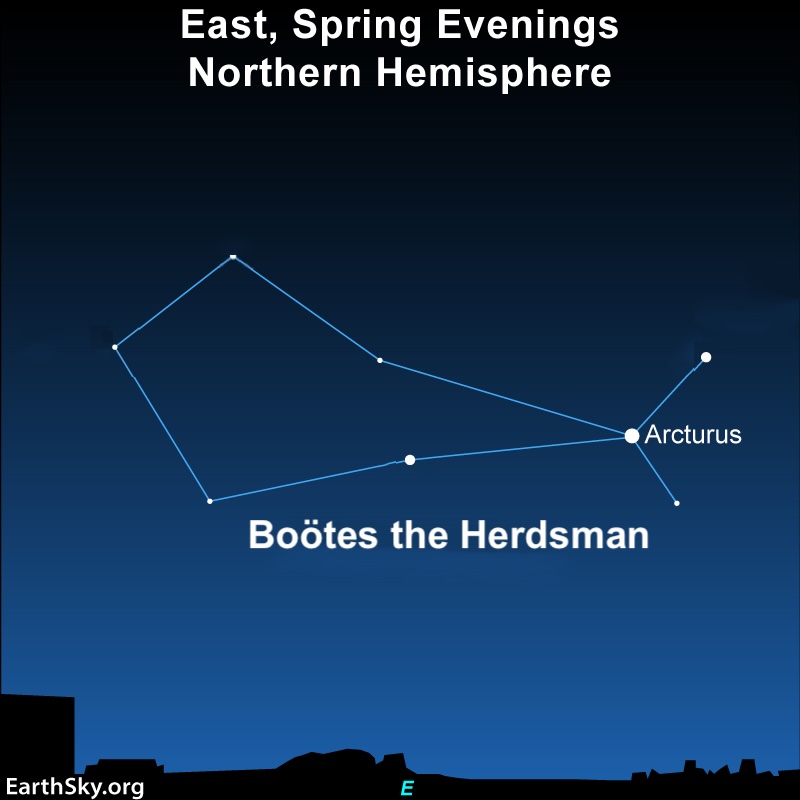 Chart via
EarthSky
.
Chart via
EarthSky
.
The Big Dipper
Ursa Major
the Great Bear is home to the Big Dipper. The Big Dipper is an asterism – a well-known group of stars – not an official constellation. You’ll find the Big Dipper high overhead from mid-northern latitudes in the June evening skies. You can use the two outer stars in the Big Dipper’s bowl – sometimes called the Pointers – to find
Polaris
, the North Star.
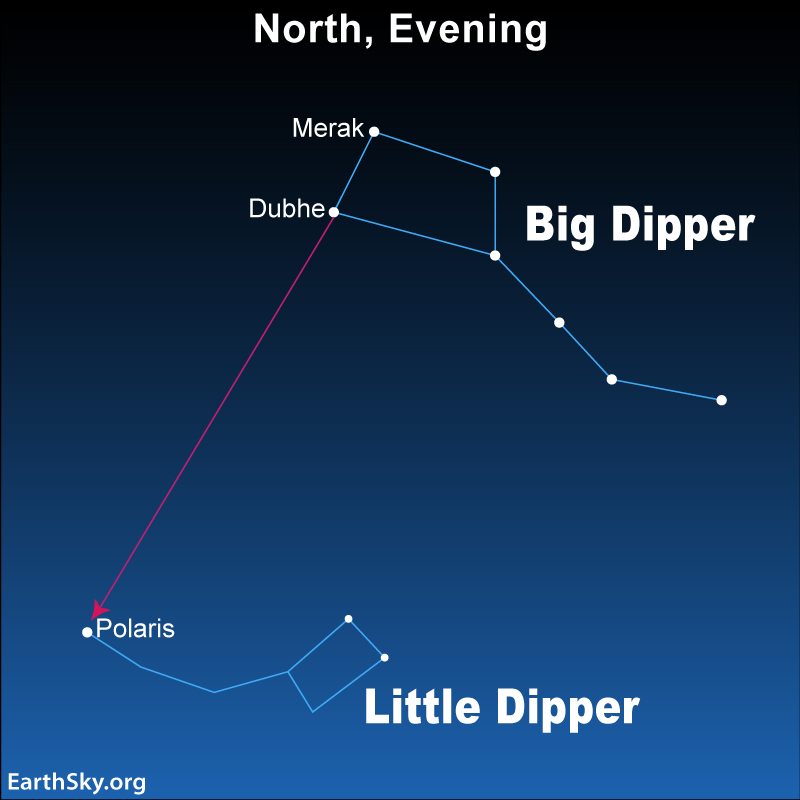 Chart via
EarthSky
.
Chart via
EarthSky
.
Hercules the Strongman and the Hercules Cluster
Hercules
is a faint constellation. But, its midsection contains the easy-to-see Keystone asterism. You can find Hercules between the bright stars
Vega
in
Lyra
the Harp and Arcturus in Bootes the Herdsman. And once you find the Keystone, you can easily locate M13, the
Hercules cluster
.
 Chart via
EarthSky
.
Chart via
EarthSky
.
Have fun exploring the sky!
June morning visible planets
In June 2024,
Mars
will shine at 1st magnitude, and its disk will grow from
five arcminutes
in diameter to 5.4 arcminutes by the end of the month. The waning crescent moon was near Mars on the mornings of June 2 and 3, 2024. Likewise, Mars began the month in the dim constellation of
Pisces
the Fish. And then it’ll move to the faint constellation
Aries
the Ram. It rose about two hours before sunrise on June 1 and will rise around three hours before sunrise by the end of June.
 Chart via
EarthSky
.
Chart via
EarthSky
.
Saturn
will shine around 1st magnitude in June 2024. Its ring system is closing – they’ll be edge-on in 2025 – and it’s getting farther from Earth. The bright star
Fomalhaut
shines nearby. Saturn spends the month in the faint constellation of
Aquarius
the Water Bearer. Saturn ends the month of June with a close pass from the moon. They’ll pair up on June 27. Observers in eastern Australia, northeastern New Zealand, Fiji and New Caledonia will see the moon pass in front of – or occult – Saturn near 15 UTC on June 27. Saturn rose about three hours before the sun on June 1 and will rise around midnight by month’s end.
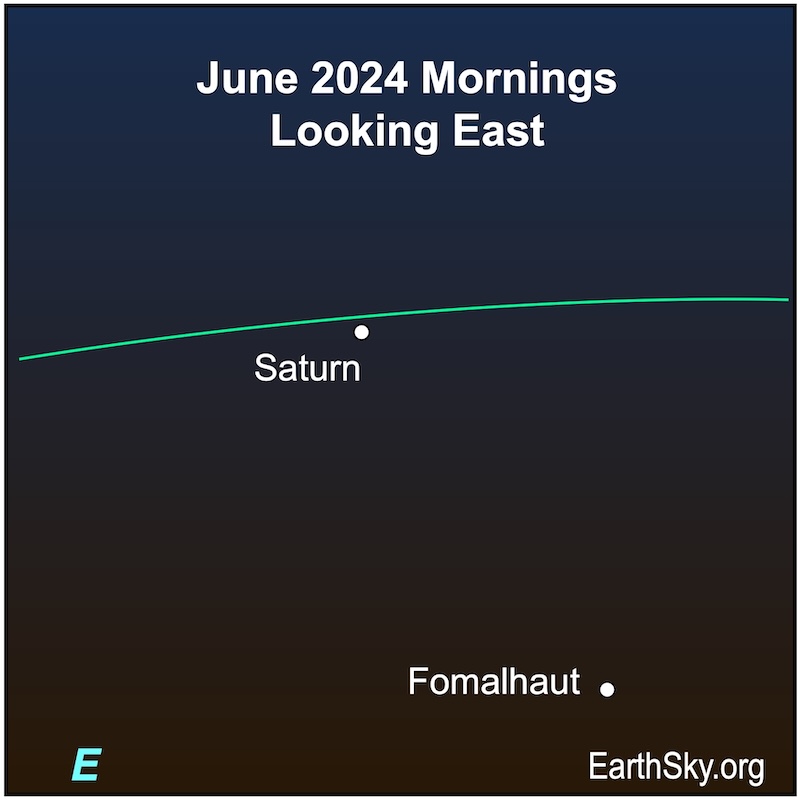 Chart via
EarthSky
.
Chart via
EarthSky
.
This month, watch for
Jupiter
in the morning twilight. Jupiter is our sky’s 2nd-brightest planet. It’s now?ascending in the east before the sunrise, a little farther from the sun each day. It’s brighter than all the stars! It won’t reach opposition – that’s when Jupiter will be most opposite the sun and best in our sky –
until December
. But Jupiter is always
bright
. It will become easier to see as June progresses. It’ll spend the month in front of the constellation
Taurus
the Bull, shining at
-1.8 magnitude
most of the month.
What fun to see its bright light emerge from the morning
twilight
! Jupiter rose about 30 minutes before the sun on June 1 and will rise about two hours before sunrise by month’s end. The delicate
Pleiades
star cluster is nearby, too. Meanwhile, Mars is higher in the sky. The video below previews Jupiter for the coming months.
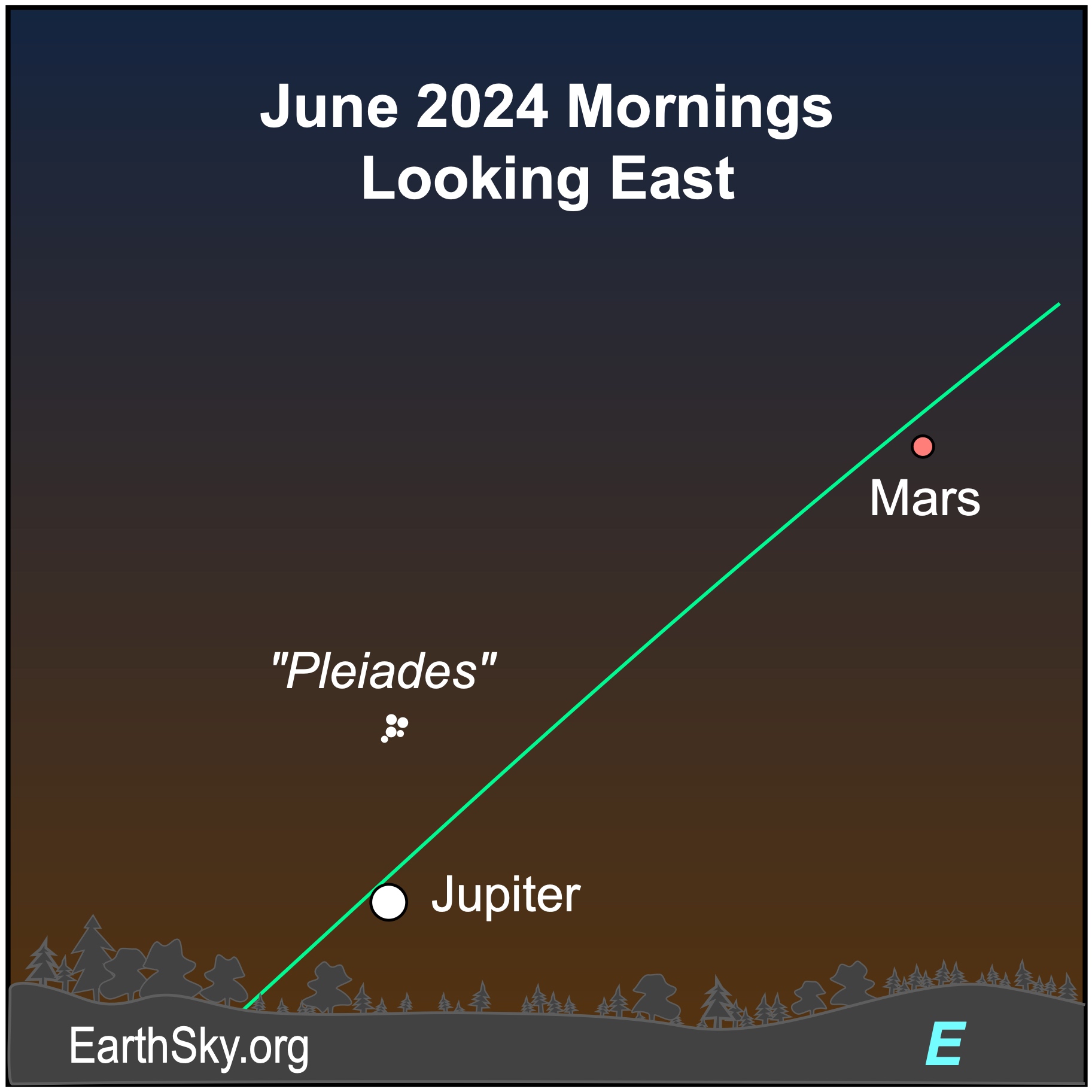 Chart via
EarthSky
.
Chart via
EarthSky
.
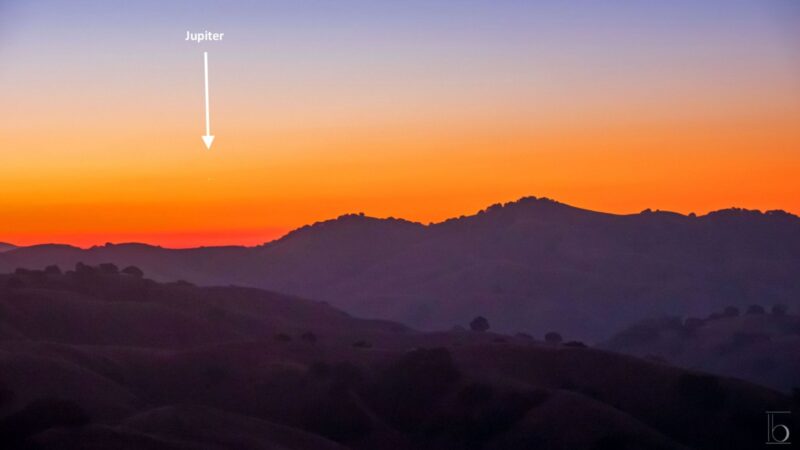 View at EarthSky Community Photos
. |
Gemini Brett
captured this image from El Sobrante Ridge Trail in California on June 11 and wrote: “Wake up before the light and you will find Jupiter looking back. Welcome, Jupiter, to the morning side. Eyes to the sky!” Thank you, Gemini.
View at EarthSky Community Photos
. |
Gemini Brett
captured this image from El Sobrante Ridge Trail in California on June 11 and wrote: “Wake up before the light and you will find Jupiter looking back. Welcome, Jupiter, to the morning side. Eyes to the sky!” Thank you, Gemini.
Mercury
slips away in the glare of the morning sun at the beginning of June. It’ll be shining at magnitude -0.8. It will rise about 40 minutes before the sun. Before Mercury disappears from the morning sky, it had a close pairing with Jupiter in the morning twilight on June 4, 2024. The pair lied low on the horizon. Mercury will then emerge in the evening twilight by month’s end.
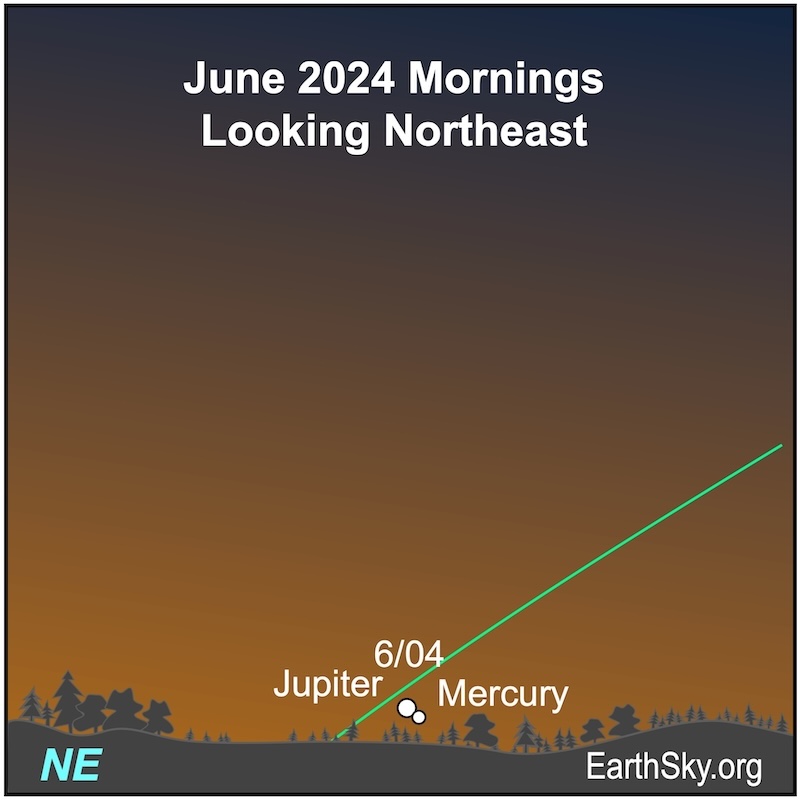 Chart via
EarthSky
.
Chart via
EarthSky
.
June evening planet
Mercury
emerges in the evening sky at the end of June. Binoculars will help spot this little world. It’ll reach its
greatest evening elongation
on July 22, 2024, when it’s 27 degrees from the sun. It’ll be shining at magnitude 0.6. This will be the best evening apparition of 2024 for Southern Hemisphere observers. Mercury will be in the constellation
Gemini
the Twins. Later, it’ll set about an hour after the sun by the end of June.
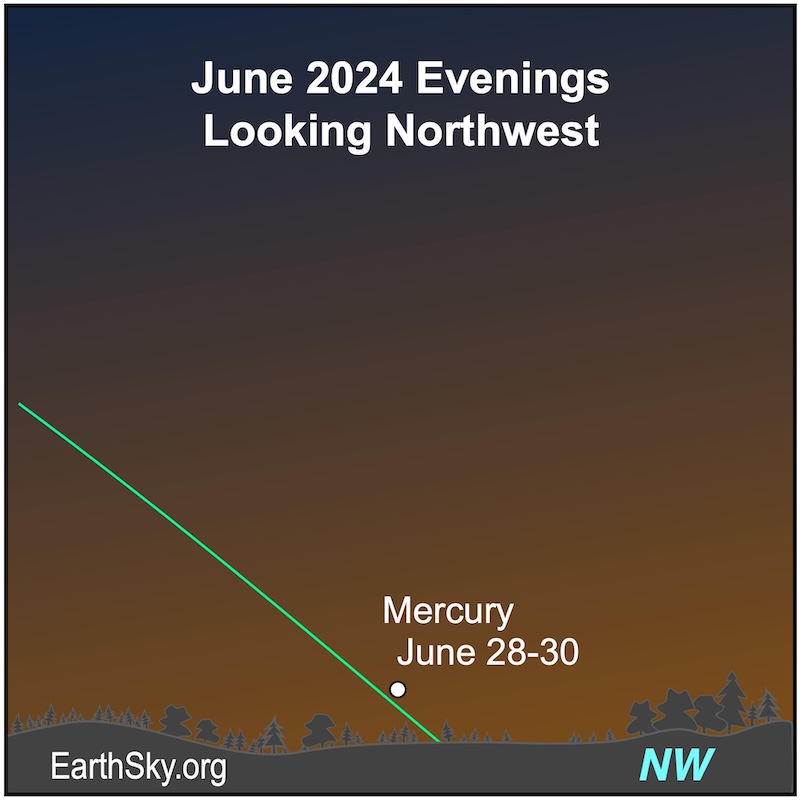 Chart via
EarthSky
.
Chart via
EarthSky
.
Where is Venus?
Venus
is too close to the sun to be visible this month. But, it’ll emerge in the evening sky by the end of July.
Thank you to all who submit images to EarthSky Community Photos!
View community photos here
. We love you all.
Submit your photo here
.
Looking for a dark sky? Check out
EarthSky’s Best Places to Stargaze
.
Sky dome maps for visible planets and night sky
The sky dome maps come from master astronomy chart-maker
Guy Ottewell
. You’ll find charts like these for every month of 2024 in his
Astronomical Calendar
.
Guy Ottewell explains sky dome maps
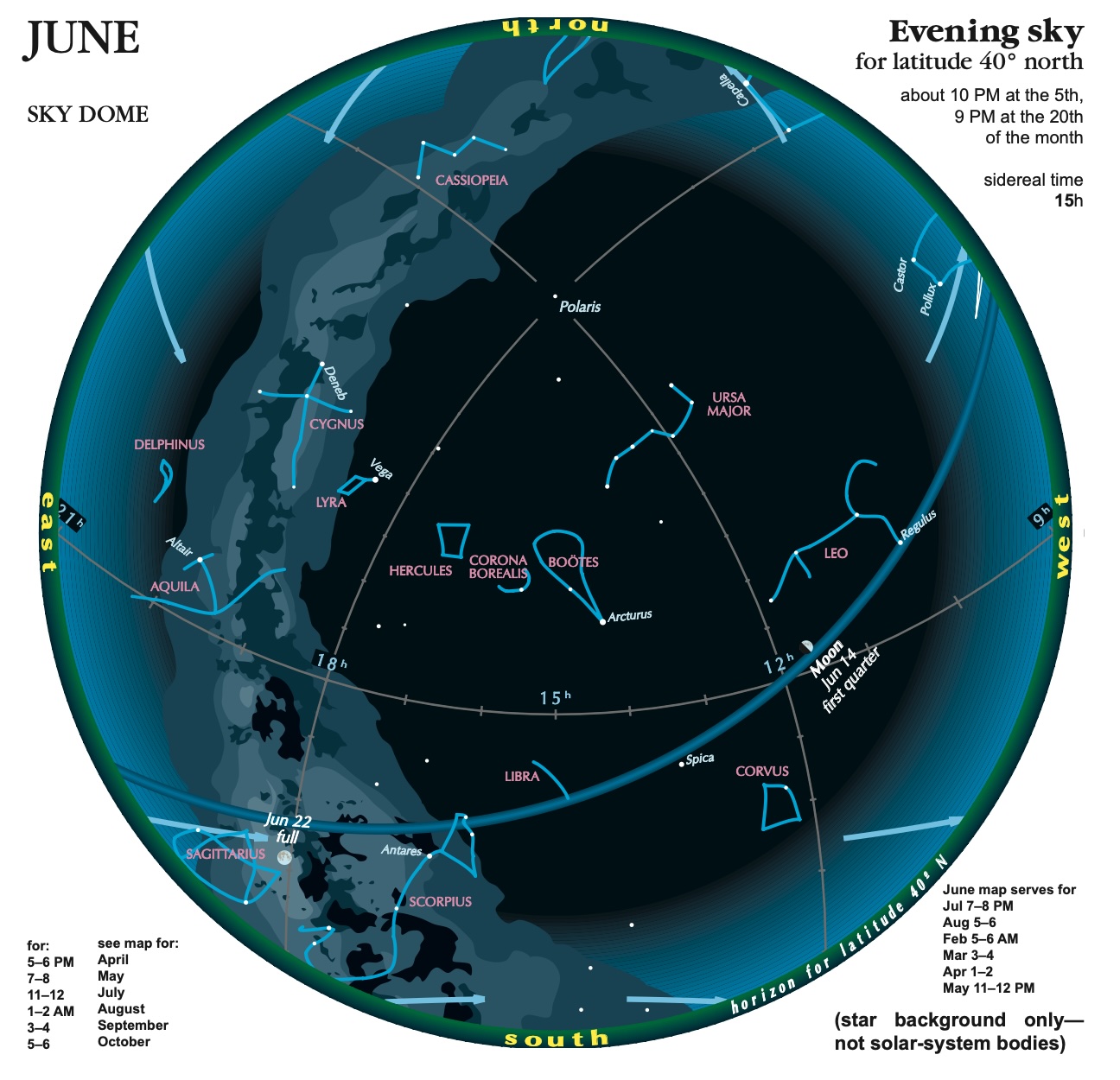 Here is the sky dome view for June 2024. It shows what is above the horizon at mid-evening for mid-northern latitudes. The view may vary depending on your location. Image via
Guy Ottewell’s 2024 Astronomical Calendar
.
Here is the sky dome view for June 2024. It shows what is above the horizon at mid-evening for mid-northern latitudes. The view may vary depending on your location. Image via
Guy Ottewell’s 2024 Astronomical Calendar
.
Heliocentric solar system visible planets and more
The sun-centered charts come from Guy Ottewell. You’ll find charts like these for every month of 2024 in his Astronomical Calendar.
Guy Ottewell explains heliocentric charts
.
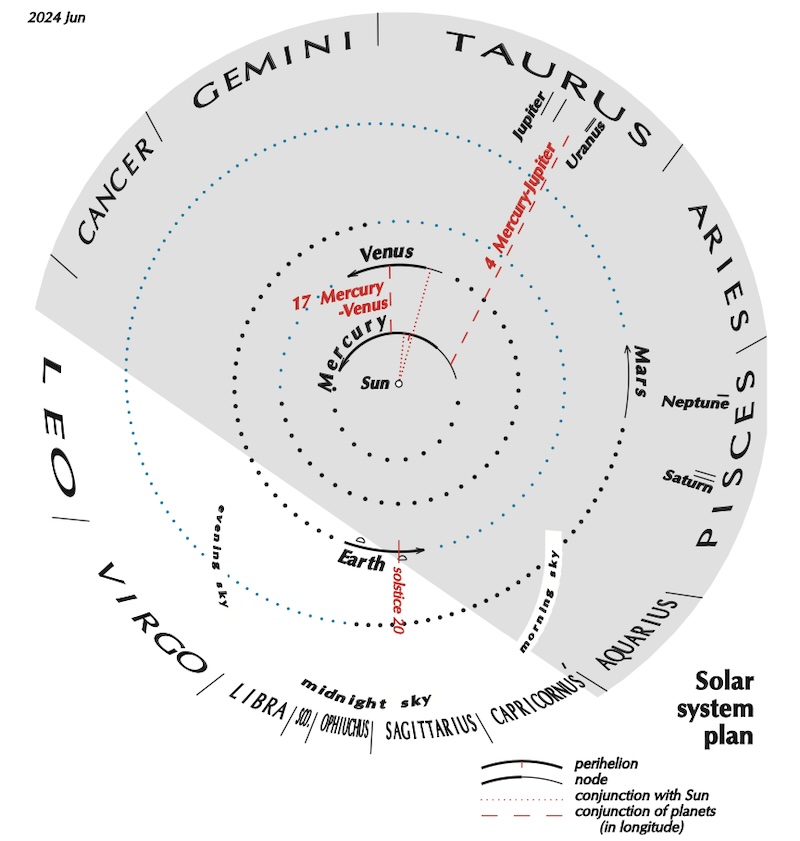 Heliocentric view of solar system, June 2024. Chart via
Guy Ottewell’s 2024 Astronomical Calendar
. Used with permission.
Heliocentric view of solar system, June 2024. Chart via
Guy Ottewell’s 2024 Astronomical Calendar
. Used with permission.
Some resources to enjoy
For more videos of great night sky events, visit
EarthSky’s YouTube page
.
Watch EarthSky’s video about
Two Great Solar Eclipses Coming Up
Don’t miss anything. Subscribe to daily emails from EarthSky. It’s free!
Visit EarthSky’s Best Places to Stargaze to find a dark-sky location near you.
Post your own night sky photos at EarthSky Community Photos
.
Translate Universal Time (UTC) to your time.
See the indispensable Observer’s Handbook, from the Royal Astronomical Society of Canada.
Visit Stellarium-Web.org for precise views from your location.
Almanac: Bright visible planets (rise and set times for your location).
Visit TheSkyLive for precise views from your location.
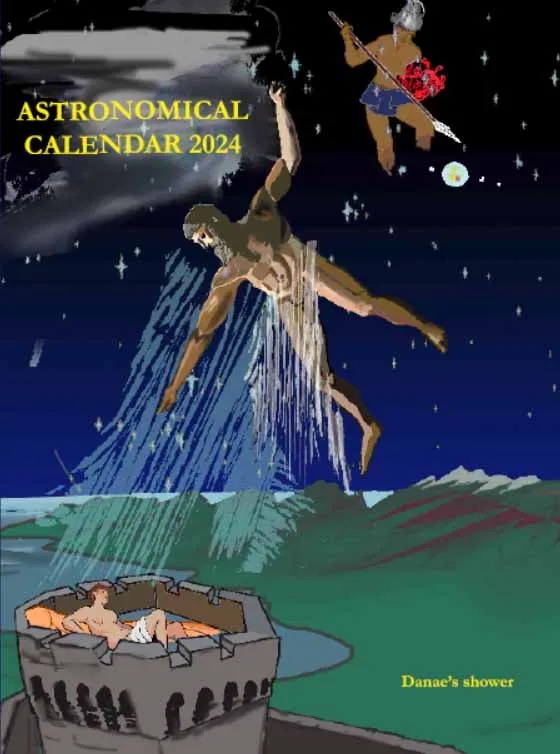 Attention amateur astronomers! Guy Ottewell’s popular and informative
Astronomical Calendar for 2024
is available in both electronic and printed versions.
Attention amateur astronomers! Guy Ottewell’s popular and informative
Astronomical Calendar for 2024
is available in both electronic and printed versions.
Bottom line: Visible planets and night sky guide for June 2024. The year’s latest sunsets come after the longest day (the solstice). Why?
John Jardine Goss
View Articles
About the Author:
“I can sometimes see the moon in the daytime” was a cosmic revelation that John Jardine Goss first discovered through personal observations at age 6. It shook his young concept of the universe and launched his interest in astronomy and stargazing, a fascination he still holds today. John is past president of the Astronomical League, the largest U.S. federation of astronomical societies, with over 20,000 members. He's earned the title of Master Observer and has authored the celestial observing guides Exploring the Starry Realm and Carpe Lunam. John also writes a monthly stargazing column, Roanoke Skies, for the Roanoke Times, and a bimonthly column, Skywatch, for Blue Ridge Country magazine. He has contributed to Sky and Telescope magazine, the IDA Nightscape, the Astronomical League’s Reflector magazine, and the RASC Observer’s Handbook.